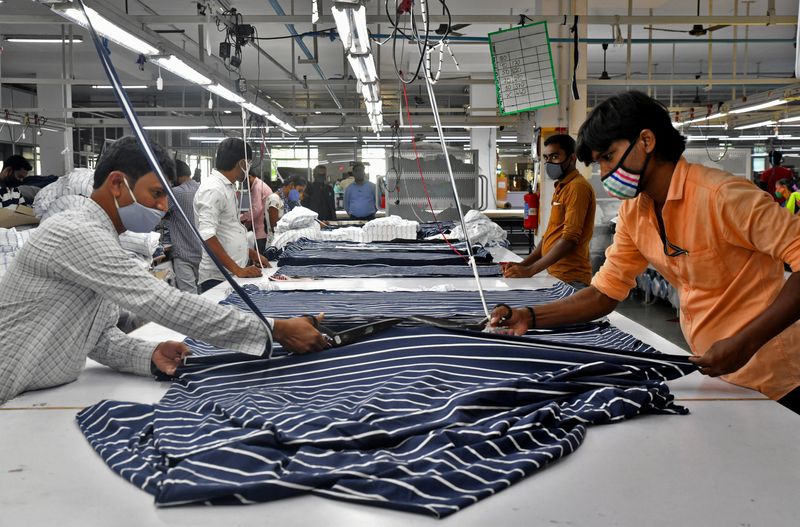India’s textile industry revs up, giving hope on jobs for PM Modi By
[ad_1]

© Reuters. Garment workers cut fabric to make shirts at a textile factory of Texport Industries in Hindupur town in the southern state of Andhra Pradesh, India, February 9, 2022. Picture taken February 9, 2022. REUTERS/Samuel Rajkumar
2/5
By Krishna N. Das
HINDUPUR, India (Reuters) – At Texport Industries’ factories in India’s south, thousands of mostly women workers are busy converting yarn and fabrics into T-shirts, shirts, spaghetti tops and kids’ clothes for U.S. customers of Tommy Hilfiger and Kohl’s Corp (NYSE:).
After being outpaced in recent years by neighbouring Bangladesh and then hammered by the COVID-19 pandemic, India’s garment factories are now humming near full capacity – a rare labour market bright spot for Prime Minister Narendra Modi and his ruling party as they head towards an election in 2024.
“We have been so busy,” said Parashuram, the head of one of the Texport factories who goes by one name, as a batch of 60 new women recruits practiced stitching. “We are constantly looking to hire workers.”
The company is scouting for land to add new factories around its main production base in Hindupur, about 100 km (60 miles) north of tech hub Bengaluru.
Sustained success for the textile and apparel (T&A) industry, the country’s biggest employer after farming, is crucial if Modi is to succeed in taming unemployment.
India’s jobless rate is above 7% and estimated to have exceeded the global average in five of the last six years – a massive problem for a country that must create millions of jobs each year just to keep pace with the young people joining the labour market.
HIGHER LABOUR COSTS
India is the world’s fifth biggest T&A exporter with a 4% share of the $840 billion global market, while China controls more than a third of it. India’s exports were on a par with closest rival Bangladesh about a decade ago but have lagged in recent years – especially on garments – partly due to higher labour costs that make Indian clothes some 20% costlier.
Indian T&A companies say they are now adding new clients, selling more to old ones and raising production capacity as foreign buyers seek to diversify their supply chains.
Other than China, only India has a big supply chain of everything from cotton to garments.
Still, some industry leaders said that unless India signed free trade agreements with Western countries – which New Delhi says it is working on – it would not be easy to outsell Bangladesh, which also enjoys preferential export terms from many buyers as a least developed country.
Indian companies such as Texport, Welspun India and Raymond – whose buyers include Western retailers Amazon (NASDAQ:), Target (NYSE:), Costco (NASDAQ:), Walmart (NYSE:) Inc, Tesco (OTC:) and Macy’s (NYSE:) – have managed to lift sales in recent quarters.
Modi wants them to create some 1.5 million jobs in the sector over the next five years or so.
India’s junior textiles minister, Darshana Jardosh, on Wednesday listed recent announcements to support…
[ad_2]
Read More: India’s textile industry revs up, giving hope on jobs for PM Modi By
